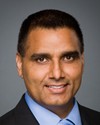Thank you very much for the opportunity to speak today and to share Safe Kids Canada's views on disease prevention and health promotion.
Safe Kids is a national leader in preventable injury. By building partnerships and by using a comprehensive approach, we work to advance safety and to reduce the burden of injury for Canada's children and youth. We welcome the opportunity to share with the committee our opinion that addressing injury prevention is a key component of a sustainable health care system in Canada.
Despite its devastating impact, injury remains an invisible issue in the health care system and with the public. Few are aware, as my colleague Rebecca mentioned, that unintentional injuries are the leading cause of death for those aged one to 44 and that they kill more children and youth than all other diseases combined.
The numbers are shocking and revealing. In 2004, injuries claimed over 13,000 lives and accounted for over 200,000 hospitalized visits and 3.1 million emergency room visits. Furthermore, sustained injuries to Canadians led to nearly 70,000 disabilities. Each day approximately 60 children are admitted to a hospital for an injury. And every month, 25 children die from an injury, which is the equivalent of one classroom.
These sustained injuries, which are potentially fatal, place immediate and unplanned demands on the system, resulting in a significant allocation of health resources for treatment as a result of injury. No part of the health care system is untouched by an injury. Emergency room visits, wait times for services such as orthopedics, community-based care, family physicians, and acute-care and rehabilitation services are all involved in responding to the short- and long-term impacts of injury.
For injury survivors, the need for care and rehabilitation of the injury and the potential for permanent disability can have far-reaching impacts on health, education, social inclusion, and the family's livelihood. Many are left with ongoing physical, mental, or psychological disabilities, which have a major impact on their lives and on the lives of their families.
The financial cost of these injuries is also very high. Injuries to children and youth, aged birth to 19, cost Canada's health care system $5.1 billion in direct and indirect costs annually.
Unintentional injury is a leading public health issue that directly impacts the health, well-being, and quality of life of those injured and their families, communities, and the greater society, as well. Nevertheless, injury is often neglected, and investment has not been equal to the magnitude of the problem. The reality is that injury prevention has not kept pace with other public health interventions, such as tobacco control or infectious disease prevention programs.
Currently, health care dollars tend to be focused on disease treatment, not prevention. The amount of resources and the priority given to health research for injury research is proportionately minuscule when compared to the huge economic and social burden. And it is somewhat tragic, given that almost all injury events are both predictable and preventable.
A number of years ago it was estimated that injury received one per cent of research funding, and not much has changed since then. The challenge is balancing the immediate needs of people seeking medical advice, treatment, and care with the possible future benefits accruing from disease prevention and health promotion.
We know that effective strategies for injury prevention save lives, substantially reduce health care costs, and offer a high return on investment. The cost of primary programs is much cheaper than treating a child, sometimes for months, because of a preventable injury. Studies have shown that a $46 child safety seat generates $1,900 in benefits to a society, and a $31 booster seat generates $2,200. A $10 bicycle helmet generates $570, and so on.
Attention must be paid to aspects of health that include preventing individuals from requiring health services in the first place, thereby alleviating pressures on the system overall. We know that unintentional injuries are often described as accidents, something we have no control over. In reality, as I've said, we can predict and therefore prevent unintentional injuries.
Injuries generally result from combinations of adverse environmental conditions, equipment, behaviour, and personal risk factors, any and all of which can be changed. It is estimated that 90% of injury deaths could be prevented if known proven strategies were implemented.
To address the injury burden, Safe Kids Canada, along with other national, provincial, and territorial organizations, strongly encourages the government to take a leadership role. As you've heard, Canada currently ranks disappointingly on the OECD nations for deaths from unintentional injuries. It's estimated that if Canada had enjoyed the same injury rate as Sweden between 1991 and 1995, 1,233 children would not have died, between 23,000 and 50,000 would not have been hospitalized, and more than 250,000 children would not have visited emergency rooms.
The time for action is now. Human resources and funding at a level more in line with the burden of injury on society and more in keeping with resources dedicated to other comparable health issues are urgently needed. We recommend a comprehensive approach based on the principles of national leadership and coordination, a strategy that should include leadership in data and surveillance, coordination and collaboration, injury prevention research, working with NGOs to broker knowledge in Canada, developing a strategy to engage potential stakeholders to encourage full investment and engagement, and increasing awareness of and attention to the injury prevention problem in Canada.
Enacting a pan-Canadian injury prevention strategy would not require starting from scratch; rather, it would build on existing structures and activities. Both within and outside Canada, initiatives and strategies have been in place for some time and their efforts should be applauded. However, we urgently require government leadership, with collaboration from NGOs, to facilitate coordination and efficiency. In establishing and funding a national injury prevention strategy and thereby setting priorities and accountabilities, Canada could position itself at the forefront of health promotion and disease prevention, both at home and abroad.
Internationally the principles of prevention and health promotion have been acknowledged as the most effective means to address persistent health issues, requiring long-term and coordinated strategies. Most notably, in May 2011 the World Health Organization adopted its first ever resolution on child injury prevention. The resolution calls for child injury prevention to be recognized as a key determinant of health in children. The resolution also calls childhood injuries a major threat to child survival and health, and notes that injuries are often a neglected public health issue, with significant consequences on mortality, morbidity, quality of life, and social and economic factors. The WHO further recommends that a government agency take on the leadership role in child injury prevention, and this is based on the acknowledgement by member states that child injury prevention should be part of each country's plan for child and adolescent health, and that child injury prevention should be integrated within child survival programming.
Countries that have created injury prevention strategies and programs have seen a 50% reduction in injury rates over a 20-year period. In general, countries that use a combination of broad approaches in addition to encouraging a culture of safety and displaying strong political commitment have made the greatest progress in reducing their child injury burden.
The injury prevention community has been encouraged by recent government investment in injury prevention. As we heard in 2011, the government committed to a $5 million investment over a two-year period into keeping children active and safe by focusing on community-based activities. The major focus of this investment is on injuries such as concussions, drowning, and fractures--all important. However, significant reductions in injury rates can be achieved through more concerted national coordination and investment.
Health promotion, coupled with preventative measures, not only advances the overall health and quality of life for Canadians, but also improves the sustainability of the health care system by creating significant cost savings in the long term. The cost of inaction, when it comes to safety and the health of Canada's children, youth, and adults, is simply too high.
Thousands of lives could be saved each year. We're pleased to share our experience with you in order to achieve our mission, which is fewer injuries and healthier children, and a safer Canada.











